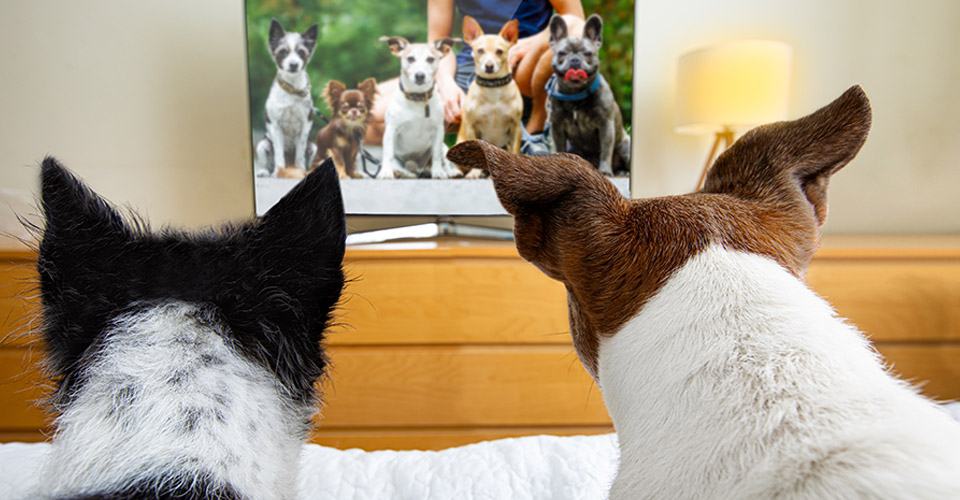We have all seen videos of cats and dogs watching television and reacting to it comically. This proves that at least some pets respond to television and video images. But do our pets really register video content, and does it have any meaning to them?
What science says
A study* done for the benefit of the computer design community found that dogs tend to glance at video screens rather than focus on the images. The time they paid attention to the video screen was short. Surprisingly, the study also found that when dogs were shown three screens with video content, they preferred to watch nothing rather than any of the content! Remember, this is a study reporting the average, and it does not mean that all dogs will prefer staring at a blank screen.
Recent human neuroscience advances have improved methods to evaluate pets’ reactions to stimuli. In another study published in January 2022, the researchers found that dogs prefer live interaction with people to video interaction. This is not surprising. However, their reactions to inanimate objects were similar, whether the objects were viewed by video or were live.
Do pets see videos the way we do?
The short answer is no. There are several differences. Dogs have different colour perceptions and only see blues, greens, and yellows. Another difference is in how dogs and humans see. A normal adult human being has 20/20 vision; the average dog's vision is closer to 20/75. Dogs must sit closer to the screen to get a clear image.
There is also a difference in “flicker fusion rate” between human beings and dogs. Flicker fusion is basically the number of images that must be shown per second to provide a smooth, moving video image. The flicker fusion for dogs is higher, which means that what is seen as a smooth video by humans can look like rapidly flickering pictures to a dog. Newer televisions, desktops- and laptop screens have a higher refresh rate, which provides a better viewing experience for our pets.
Are videos beneficial for pets?
Pets love doing things with their owners, and watching videos or television is often a relaxing family activity. According to Cesar Millan, everybody's favourite dog behaviour guru, dogs learn from us that watching television and videos is entertainment. We can use this to the advantage of stressed or bored pets that must be left alone at home. Find out which videos are your pet’s favourite and let that play when your pet must stay alone.
What problems could there be for pets watching videos?
Videos as entertainment should not be overused. It cannot replace human contact or healthy exercise for our pets.
And just like humans, some pets can become addicted to videos and television.
Please, also take care with the content that your pet views. Although moving objects are fun for pets to watch, this can trigger their hunting instinct. Some content may also trigger fear and anxiety in pets.
Giving your pet the best viewing experience
Some pets may enjoy videos with other pets or nature scenes, while others want to watch moving objects. The sounds they hear with the videos are more important for some pets. There is a selection of videos available on YouTube. Start searching with phrases such as “videos for pets,” “videos for cats,” “videos for dogs,” or “pet sensory videos”. Choose one and see how your pet interacts with it. Keep on experimenting and have fun.
Dr Trudie Prinsloo is a qualified veterinarian and attorney. In 2015, she started Legalvet Services to provide legal advice to the animal health and veterinary industries in South Africa – and now she’s teamed up with us to tell us more about pet sensory videos. While Dr Prinsloo is a qualified veterinarian, she cannot advise on animal behaviour issues remotely. This blog is intended for informational purposes only and should in no way be regarded as a substitute for professional veterinary advice, diagnoses, or treatment plans.
dotsure.co.za is not responsible or liable for any advice or any other information provided herein. If you have questions about your pet’s behaviour issues, the best course of action is to consult your veterinarian as soon as possible.
*A dog-centered approach to the analysis of dogs' interactions with media on TV screens I. Hirskyj-Douglas , J.C. Read, B. Cassidy. International Journal of Human-Computer Studies Volume 98, February 2017, Pages 208-220



